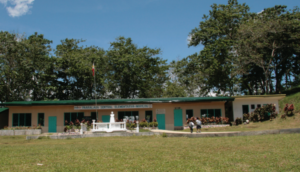Crossing the Digital Divide in Myanmar’s Rural Schools
Myanmar is the largest of the mainland Southeast Asian states. With an ethnically diverse population of approximately 51.5 million, around 70% live in rural areas. There are substantial disparities in housing, living conditions, and educational resources between rural and urban regions, with poverty being a major challenge— especially in the countryside where nearly two-thirds of the population resides.
Schools in these areas often lack updated classroom resources and adequate infrastructure, with many classrooms being overcrowded. Although public education is free, many children are sent to work in tea shops or on farms to help support their families, contributing to low school attendance in rural areas. Motivating students to attend school is a constant challenge, and teachers themselves often struggle with limited resources and difficult working conditions.
In response to these challenges, the UK’s Department for International Development, Ericsson, and Critical Links joined forces to implement the “Connect to Learn” project in 31 rural schools across Myanmar. This public-private partnership aims to provide access to quality education by equipping classrooms with user-friendly learning devices and cloud-based educational content.
The C3 Micro-Cloud plays a vital role in this initiative by providing local Wi-Fi infrastructure, applications, and cached educational content that can be accessed even when the school’s internet connection is down. Textbooks, multimedia, learning guides, and other resources are stored on the C3 Micro-Cloud, ensuring they are always available for teaching and learning.
The impact has been transformative. Teachers report that the C3 Micro-Cloud has significantly enhanced their teaching capabilities, enabling them to integrate ICT-based learning methods into their pedagogy. With instant access to a wide variety of rich content, teachers can now plan more engaging lessons and apply innovative classroom management techniques. This empowerment has given them greater confidence to embrace mobile technologies in their teaching.
Students, too, are more motivated. The use of tablets and engaging digital tools has made learning more exciting. “We come to school on foot, we walk every day. On the days when we have class using the tablet, we walk to school faster!” said one student.
In a country where rural students have limited access to books and support programs, using the internet in class is enriching the educational experience. The integration of technology is helping students develop critical digital skills and raising their aspirations. They now believe they are being educated to international standards—offering them real hope for a better future.
Thanks to the Connect to Learn program and the C3 Micro-Cloud, nearly 30,000 students and 310 teachers in 31 schools have the opportunity to leapfrog into a 21st-century education model where technology is a fundamental part of the classroom. Regardless of their social or economic background, they now have equal access to the tools and resources needed to build a brighter future.
This project is a powerful example of how technology can bridge the digital divide in education. It has supported Myanmar’s education system in becoming more effective and inclusive. We are proud to be part of this initiative.


